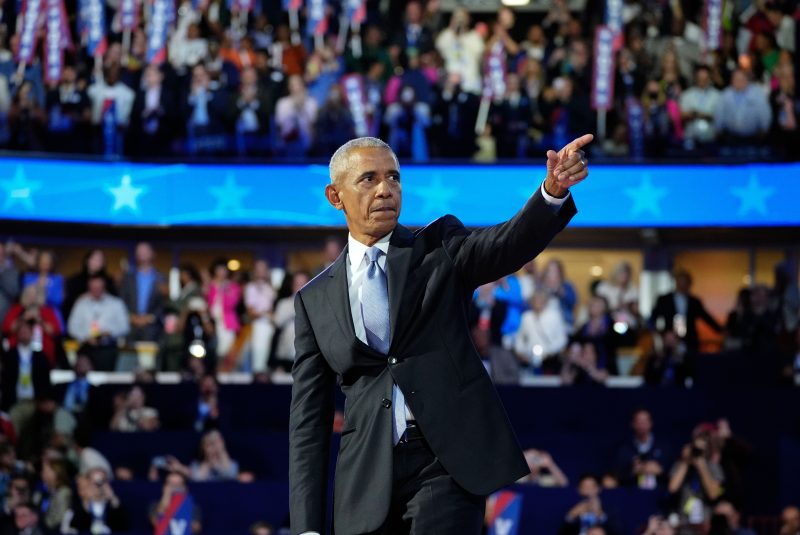At last week’s Democratic National Convention, both Barack and Michelle Obama pitched Vice President Kamala Harris as something of a new standard-bearer for their political movement. It was high praise, yes, but it was also a lot to live up to. The Obama era was inarguably the political high point for Democrats in the 21st century; the potential downside of building someone up like that is that it sets expectations too high.
But it’s increasingly evident that, as Harris’s national poll numbers have crept closer to the kinds of margins Barack Obama racked up, Democrats are indeed feeling some familiar feelings.
Some striking new polling shows the party effectively matching its Obama-era enthusiasm high. Also importantly, it shows Democratic voters’ enthusiasm is suddenly much more geared toward supporting their own candidate rather than opposing the potent boogeyman that is Donald Trump.
Both findings loom large, because they suggest it could be a lot easier for Democrats to get their voters to the polls in the 2024 elections than it has been in the past couple of cycles.
The big new numbers come from Gallup. Its new poll shows that 78 percent of Democratic-leaning voters say they are “more enthusiastic” about voting than in other recent elections. As in other recent polls testing enthusiasm, Democratic-leaning voters have suddenly surged past Republican-leaning ones (64 percent) since Harris’s entry.
The Gallup survey is particularly helpful in that it helps us put that into context, given the company’s decades of polling. And that context suggests Democratic-leaning voters are actually historically enthusiastic.
That 78 percent figure is just one point off the highest number from the Obama era (79 percent). It’s higher than more than a dozen other Gallup polls conducted when Obama was running in 2008 and 2012. It’s also higher than GOP enthusiasm has ever been since 2000.
And that high point for Democratic-leaning voters in 2008 actually came during Obama’s primary contest with Hillary Clinton, in February 2008, not during the general election. In the final month of the general election, enthusiasm among Democratic-leaning voters was generally in the low to mid-70s (the highest being 76 percent).
The margins of error factor in here, but it’s possible Democratic-leaning voters are actually more enthusiastic now than they were when they were sending Obama to the White House.
(It’s also worth noting that this isn’t a convention bounce; the poll was conducted from Aug. 1 through Aug. 20, the day after the convention began.)
The other callback to the Obama era in the new poll numbers is in what this sudden surge in enthusiasm indicates: Democrats feel they are actually voting for something rather than against something.
A new Economist/YouGov poll shows 62 percent of Harris’s supporters say their vote is “mostly for” Harris, while 35 percent say it is “mostly against” Trump. We haven’t seen numbers like that since Trump was elected in 2016.
When President Joe Biden led the Democratic ticket, until last month, the numbers were effectively flipped, with 6 in 10 Biden voters saying they were mostly voting against Trump rather than for Biden. The numbers were similar ahead of the 2020 election, which Biden won.
Harris has also seen significant jumps on this number. The percentage of her supporters saying their vote was mostly about her has gone from 41 percent in late July to 55 percent early this month to 62 percent today.
That 62 percent is similar to where things stood in the final days of the Obama era, when Clinton was leading the Democratic ticket. But it’s arguably more impressive because the Democratic Party has become so defined over the past eight years by its opposition to Trump (who was more of an abstraction back in 2016).
Precisely what motivates voters — whether it’s being for one candidate or against another — would seem somewhat beside the point. The point is that they vote. Biden was elected president, after all, largely based on so-called negative partisanship.
But ideally, you’d want both factors to work together in your favor. And for now, Harris seems to have combined that constant and politically potent Democratic hostility toward Trump with some real and significant enthusiasm for her personally.
Which might help explain why Democrats are as “fired up” and “ready to go” as they ever were with Obama.

